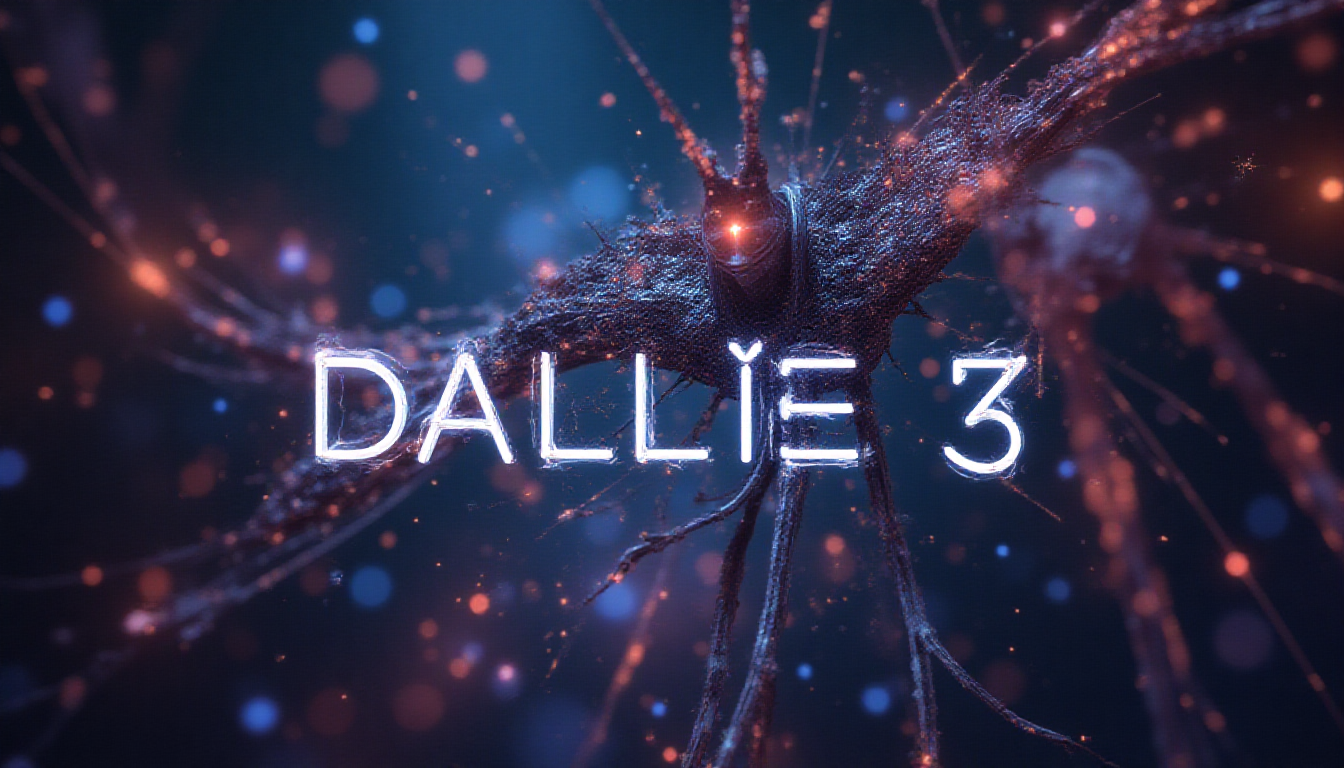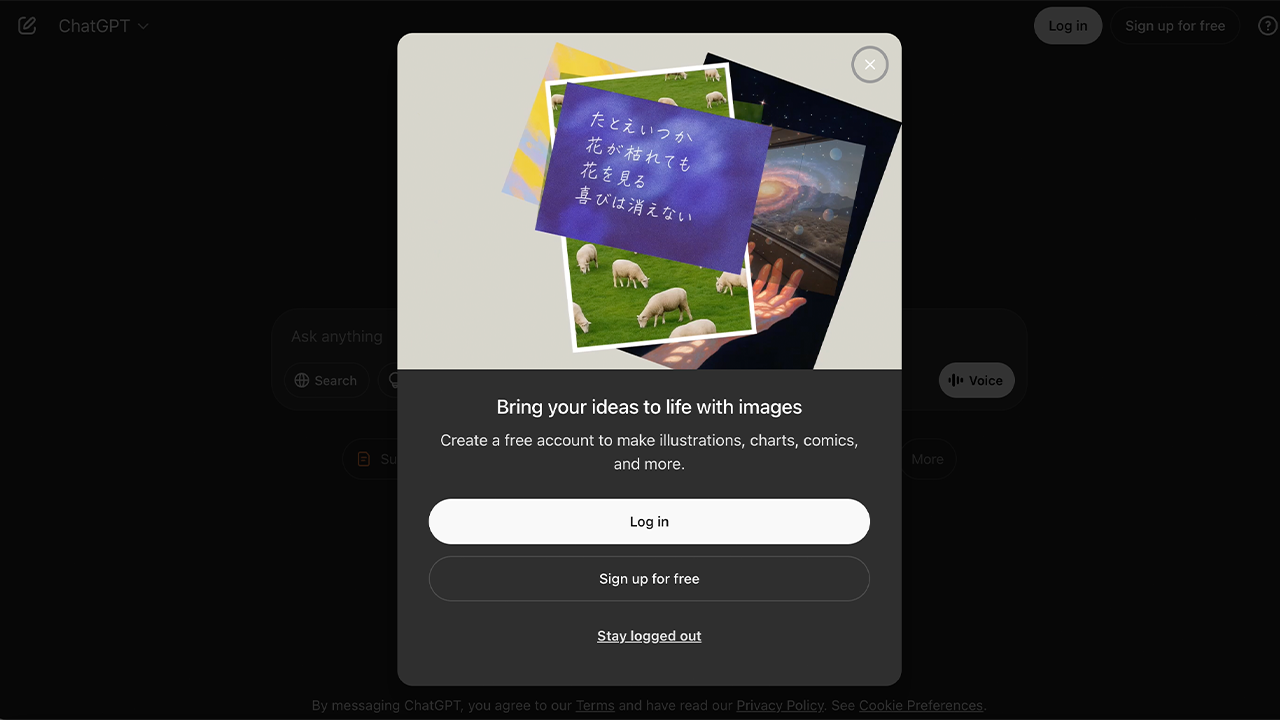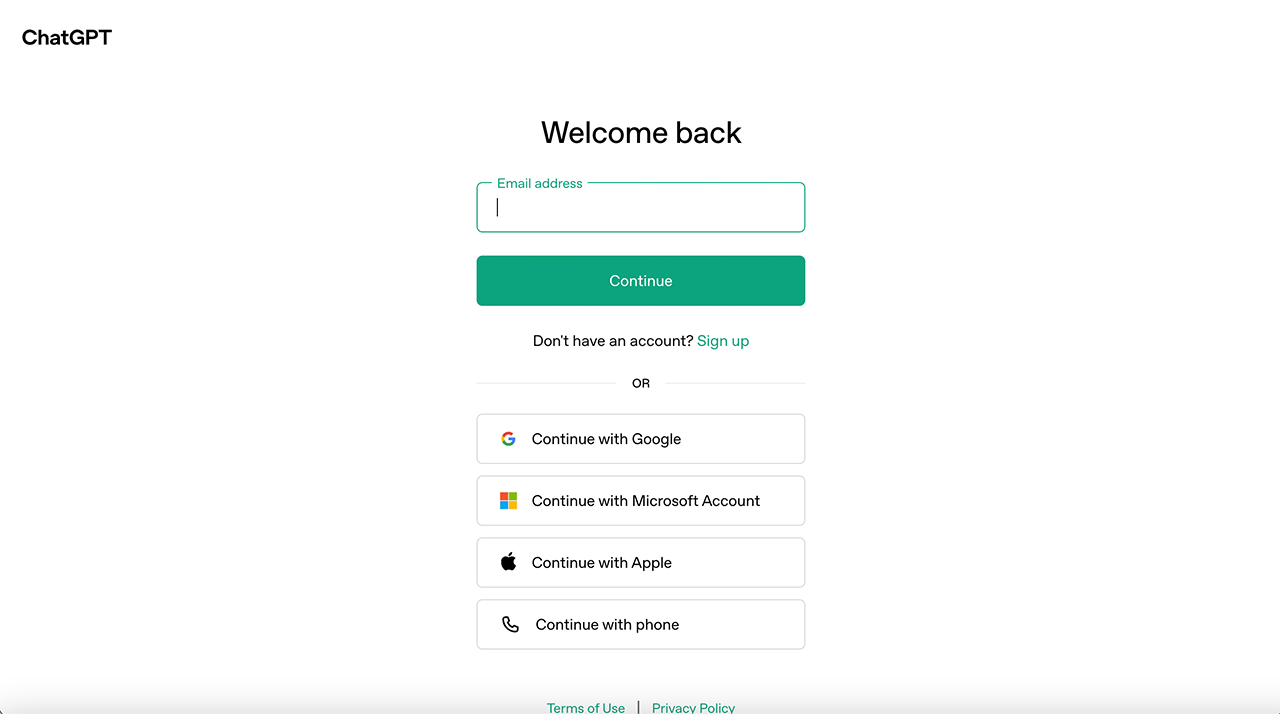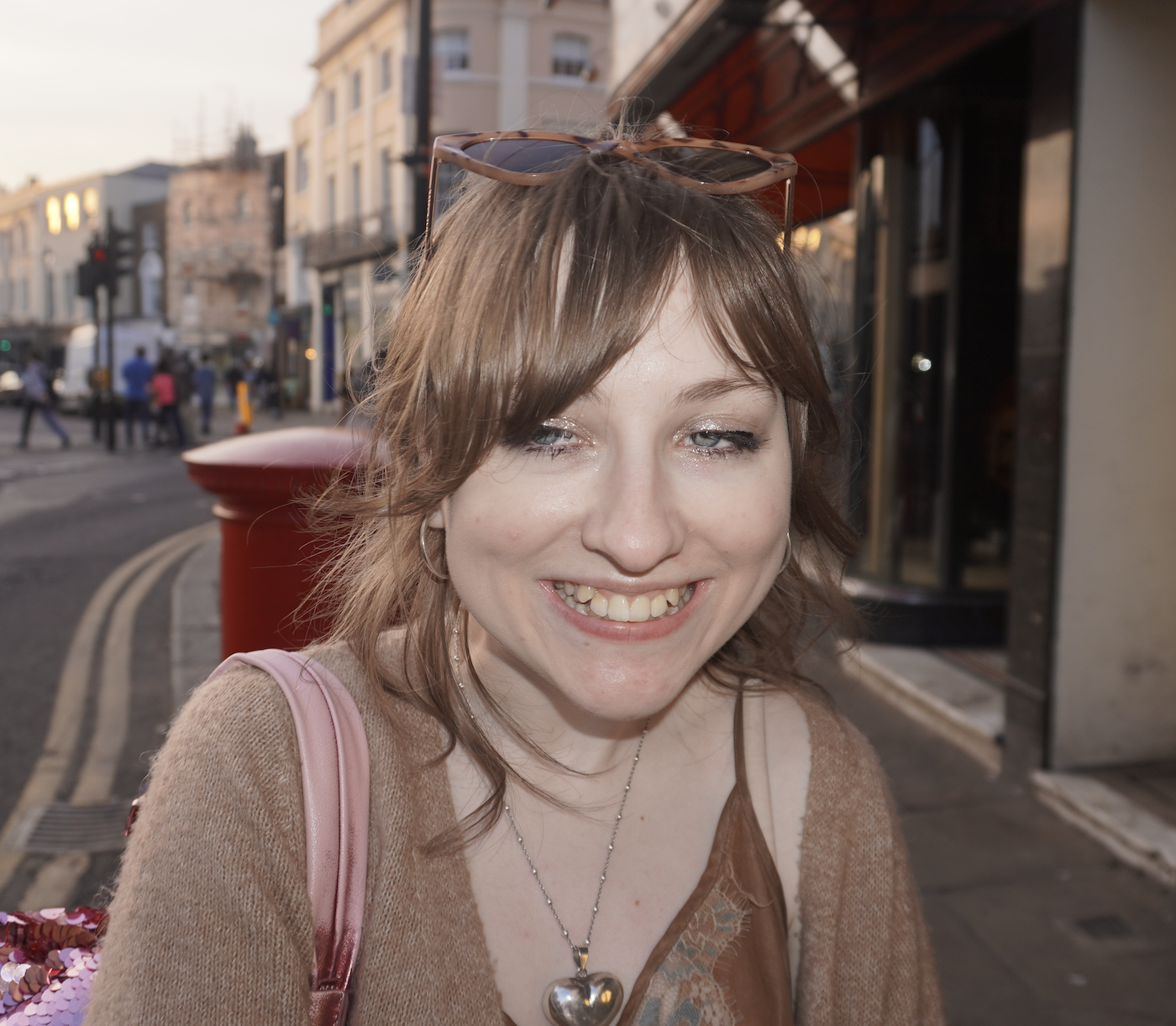How to use DALL·E 3 in ChatGPT: all you need to know
Here's how to use DALL·E 3 to generate any image you want.

You might or might not have heard of DALL·E 3, but if you've ever used Chat GPT to generate an image, you've used it. That's because DALL·E 3 is Open AI's image generation software, which allows anyone to generate images of practically anything by writing a text description. While other versions of DALL·E have been available to access through a separate website, it's now only available to use directly through Chat GPT and Open AI's API Platform, which allows you to integrate DALL·E 3 into your own software.
As with all AI image generators, the tool is controversial due to the risk of misuse and a question mark that hangs over the copyright on the billions of images that were used to train the model. Nevertheless, many artists and designers have now integrated image generation into their workflows, with DALL·E 3 being the biggest fish in the market.
DALL·E 3 is high up in our list of the best AI art generators thanks to its clean, intuitive interface and ease of use. A paid subscription on Chat GPT includes two complementary images per day using DALL·E 3's image generation software. All you need to do is go to Chat GPT's website, create an account, and then type out a text prompt.
There are a few things to bear in mind, however. Below, we'll explain how to access DALL·E 3, how to use DALL·E 3 successfully and a few tips on how to create DALL·E 3 images to the highest standard.
See our pick of the best AI art tutorials for more help learning to use DALL-E 3 and other text-to-image generators. If you prefer to create your own original work in a more traditional way, see our guide to the best graphic design software.
How to use DALL·E 3

DALL·E 3 is a browser-based tool in Chat GPT (it also offers an API that developers can use in their own apps). To use it online, you'll need to create an account. This is a quick process and once you've confirmed your email or telephone number, you can get started straight away. Free users get two complementary images a day indefinitely, but for more frequent use you'll need to create a paid account, which costs $20 a month.
When you access DALL-E 3 via Chat GPT, you'll find It's fairly intuitive. Type in a description of what you want in the text box, for example 'an astronaut riding a horse in an impressionist style'. Click 'generate' and DALL·E 3 will create an image that if it's not ready initially for professional use, often will be after a few iterations.
Daily design news, reviews, how-tos and more, as picked by the editors.
You can make edits until you get a result you're happy with by asking it to adjust certain aspects. Once you're happy, you can save the version you like. When hovering over the image that's been generated, there's a 'download' button, which instantly saves the image to your downloads folder.
How to write prompts for DALL·E 3

It's simple, but getting good results can be tricky. Prompts that are short on detail tend to get haphazard results, so it's often best to be as descriptive as possible: the more detail the better. If you're aiming to create photorealistic images, try including a camera model, focal length and type of lighting ('studio lighting', 'soft lighting', 'deep shadows', etc).

You'll often need to adjust your prompt to add more detail. The first version of the rabbit is looking a little washed out, so I changed this by adding 'make the brown darker', for example.
How to use DALL·E 3's other features

The other way to use DALL-E 3 is to upload an image from your phone or computer. You'll find the option after clicking on the '+' in the prompt field. You can have DALL-E 3 create its own variations of the image or you can edit the image. In the example above, I uploaded the AI-generated image of the original rabbit and asked it to 'add a smile'. With no further input, DALL-E 3 generated this friendly picture.
How to use DALL·E 3 outpainting

DALL-E 3 outpainting lets you expand an image beyond its original borders. This can be used with an image created in DALL-E 3 itself or an image you've uploaded – people have been using it to expand famous works of art, such as the Mona Lisa, adding more background to the image.
To do this, simply write a prompt (this time it can be more general because DALL•E 3 will try to match the style of the existing image – in the example below, I wrote 'make the image 16:9'). DALL•E 3 will then fill the rest of the frame with something that will – hopefully – fit your image.
How to improve DALL·E 3 images
It's unlikely that DALL·E 3 is going to give you the results you want the first time. You might have to edit images by writing new prompts for specific elements within them. And there are some things that may just be impossible to correct in DALL·E 3.
There may be unwanted artefacts in images, and, like all AI art generators, DALL·E 3 can struggle with human faces and bodies, especially hands. To improve images created in DALL·E 3 you may need to export them and then edit them in more traditional image editing software like Photoshop. For example, you can fix wonky eyes using Photoshop's Neural Filters.
DALL·E 3 also has a limit on resolution, which means it isn't possible to create images that are big enough to print at large sizes, but you may have success upscaling your image in another program. See below for more common questions about DALL·E 3.
DALL·E prompt book

Guy Parsons has created a DALL·E prompt book as a visual resource to help understand the specifics of prompts. Published by the AI art website the DALL·Ery GALL·Ery, it may have been made for the previous version of DALL-E, when it had its own website, but it still offers some useful pointers on how to get the most out of the current version of the AI art generator.
The 82-slide guide covers techniques for eliciting the results you want from DALL·E It covers aesthetics and vibes, recommended adjectives to use to get the feel or composition you're after and tips on everything from photography to painterly portraits and landscapes, film and illustration styles and 3D art. For illustration, it provides examples of different styles, media and textures. It also shows how you can use styles from art history in prompts to get interesting results.
The guide points out that even the creators of DALL·E don't know what the tool knows and doesn't know. Instead, users have to work out what it's capable of doing and how to get it to do what they want. One piece of advice is to be specific – state whether you want a close-up image or a particular angle. And remember that an adjective without further definition is subjective, and could be interpreted in different ways – to influence the whole look of an image or something as specific as the style of dress of the subject.
DALL·E FAQ
What is DALL·E 3?
DALL·E 3 is a text-to-image AI art generator based on machine learning that's been provoking both horror and awe online (see our pick of the weirdest AI art created by DALL·E 2). Created by the artificial intelligence company Open AI, it's a generative tool, which means it can generate art from scratch as well as create edits or variations of existing work. It doesn't actually 'know' what it's creating but it makes assumptions based on the massive collection of 650 million image and caption combinations that it's got in its database.
The name is a portmanteau of 'Dali' (as in Salvador) and Pixar's 'WALL-E'. As the name suggests, this is the third iteration of the tool, and although it is a massive improvement on the first two iterations, its move to Chat GPT appears to give users far less specialist control over determining the exact output of the image.
However, the images are now more responsive to the prompts, far quicker to produce. And don't forget, you can create your own software for DALL•E 3 with Open AI's API platform anyway, so there's nothing to stop you from making an app or website that allows you to edit more specifics of the output file.
It's not the only generative AI art creator that works based on text prompts. Artbreeder has launched Artbreeder-collages, which blends text prompts with a collage-like design process. Stable Diffusion and Midjourney are also popular. What appears to potentially set DALL·E 3 apart is the results for particular styles of image, particularly more photorealistic images (see how the best AI art generators compare).
Is DALL·E 3 available to the public?
For the first five months after the release of DALL•E 2 in April 2022, DALL-E access was limited, and there was a long waiting list. But now DALL•E 3 can be accessed as easily as through Chat GPT, so anyone can sign up and get started in minutes.
According to OpenAI, “Responsibly scaling a system as powerful and complex as DALL-E – while learning about all the creative ways it can be used and misused – has required an iterative deployment approach.” It says it's now shored up its safeguards enough to open access to everyone.
The catch? DALL·E 3 is no longer free to use. Instead, free users are entitled to two complementary images per day, with paid Chat GPT subscriptions allowing unlimited image creation.



How do I sign up for DALL·E 3?
You can complete DALL-E 3 sign up by creating an account on Chat GPT's website. You'll be asked to enter your email address and a security code and to create an eight-digit password. You'll then receive an email with a code that you'll have to enter to confirm your identity. You can also create an account using an already existing Google or Microsoft account. Choose your plan, and you're ready to get started using DALL-E 3.

How can I make my DALL·E 3 images better?
If your DALL•E 3 images aren't turning out how you'd like there are a few things you could bear in mind. Ensure your prompt is a detailed as possible – including detail about the background if that's important. Specify the style of art you want if you're going for an artistic style, or specify camera angles, lighting details, focal distance and even the specific camera if you're aiming for a photographic style.
DALL•E 3 struggles with requests for images of multiple subjects, so if possible keep it to one subject. That can be limiting, but if you want to create images with multiple subjects, you could try creating separate images and then, one by one, request that DALL•E 3 combines them. Remember that you can always ask DALL•E 3 for more edits, or alternatively export them to edit in the best photo editing software.
How much does it cost to use DALL·E 3?
DALL•E software used to be completely free to use, but OpenAI has now integrated it into Chat GPT's system and scrapped DALL•E 3's individual website, meaning that access comes with a Chat GPT account.
Although it might be free to have two images generated per day with DALL•E 3, any more than that will require a paid Chat GPT subscription, costing $20 a month. OpenAI has invited artists who need financial assistance to apply for subsidised access.
Is there a completely free DALL·E 3 alternative? Yes, there are several free AI art generators available. As well as Art Breeder-Collages, which we mentioned above (currently in beta), there's DALL•E mini – now called Craiyon (although it produces some nightmarish results), and Stable Diffusion, which is open source.

Can I use DALL·E 3 for commercial use?
Until now OpenAI had prohibited commercial use of images generated by DALL·E, but in the beta version, it's now giving “full usage rights” for images created with the platform. That includes the right to sell and reprint images and to use them on merchandise. We have already seen the first case of someone copyrighting AI work.
However, there are concerns about the copyright implications of training an AI model on existing images. Getty Images has banned the use of AI content on its stock image library out of concerns that copyright is murky, and some politicians are calling for specific legislation to clear the matter up.
Are there restrictions on DALL·E 3?
OpenAI says that it's able to start expanding access now thanks to changes in its policies and advances in mitigating "bias and toxicity" in images generated by the platform. The company says that it's now made changes that will push DALL·E 3 to generate images of people that “more accurately reflect the diversity of the world’s population” if race or gender is not specified in the text prompt.
While DALL•E 2 rejected image uploads that contained realistic-looking human faces or the likeness of public figures (such as politicians and celebrities), Open AI has since changed this policy, with images of real people and public figures now free to be uploaded. It has however maintained rules that prevent users from changing or creating images that could cause harm. This includes images showing self-harm, hateful symbols or illegal acts. Open AI stressed that it has both automated and human monitoring systems to prevent this.

How can you tell if an image was created by DALL·E 3 AI?
You might remember that previous versions of DALL·E contained a signature that appears as a row of coloured squares at the bottom right of the image. In the example above, you'll see this in the first image. Although this is no longer used in DALL•E 3, Chat GPT recommends using Content Credentials to check if an image has been created using Open AI's DALL•E 3 software.
Why is DALL•E 3 controversial?
There are concerns that AI image generators could be misused by people passing off AI-generated images as real, leading to fake news. Not to mention the sketchy copyright issue that's not yet been tackled in legislation, regarding the billions of online images in DALL•E 3's database.
There are also serious concerns that they could be used to create violent images or non-consensual porn. OpenAI says that it's taken precautions to avoid this and continues to learn from real-world use.
Some people are also concerned about what AI image generators mean for the future of creative jobs. Ideally, they shouldn't be putting any artists out of work, but rather that there may be potential for creatives to make the tools work for them.
How do I use the DALL•E 3 API?
Developers can integrate DALL·E directly into their apps and products using the API. For example, Microsoft, an investor in OpenAI, uses DALL·E 3 for its graphic design app Designer, which covers social media design, invitations, digital postcards and more.
Microsoft has integrated DALL·E 3 into Bing and Microsoft Edge with Image Creator, which will allow users to create images if search results don’t come up with what they’re looking for. You can learn more in the documentation on the OpenAI website.
How can I use DALL•E 3 in Chat GPT?
Once you've created a Chat GPT account and chosen a plan, you can access DALL•E 3 automatically simply by using the image generation tools. As DALL•E 3 is the image generation tool Chat GPT uses, the most updated version is integrated into the software.
Simply click on the text box, type in a prompt, and Chat GPT will use DALL•E 3 to generate your image. Make it clear in your request that you want it to create an image, as it works with text-based creations too. It usually takes two-three minutes to get your results, depending on how busy the Open AI server is.

Mabel is a writer and multi-disciplinary artist. She is a regular freelance contributor to Creative Bloq and has also written for T3, TechRadar, Tom's Guide, and other Future publications. She's currently working on obtaining her degree in illustration and visual media from UAL, as well as running her independent publishing house Mabel Media, which has just launched its debut fine print publication, ‘One day I could be living again’, stocked in Magalleria, MagCulture and the London Review of Books bookshop. When she's not writing or making art in the physical form, she's making films for Mabel Media, rollerskating or travelling.
- Joe FoleyFreelance journalist and editor
You must confirm your public display name before commenting
Please logout and then login again, you will then be prompted to enter your display name.
